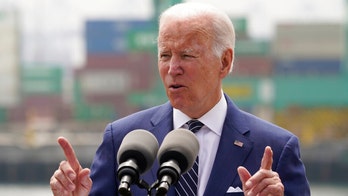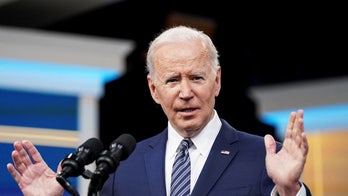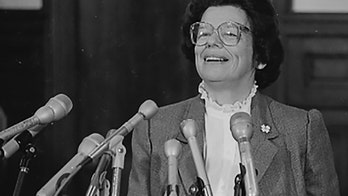Hillary Clinton tries to shift focus to health, tax records
Campaign attempts to avoid e-mail controversy
“It’s her issue,” declared President Clinton’s media affairs director Jeff Eller to the Houston Chronicle in the fall of 1993.
The “her” was then-first lady Hillary Clinton. The “issue” was health care reform. And the nascent Clinton administration deputized the first lady to market her husband’s comprehensive health care package to skeptical minds on Capitol Hill.
The essential narrative is that Hillary Clinton’s efforts to help pass comprehensive health care failed while President Obama’s were a success. But a new batch of Clinton emails released Friday show just how influential she was as the Obama administration’s secretary of state in getting the Affordable Care Act passed.
Clinton in the early 1990s became only the third first lady to ever testify before Congress. The decision by the administration to commission her as an emissary to lawmakers on such a major policy issue was unprecedented.
Clinton testified solo before at least five congressional committees on both sides of Capitol Hill about health care reform. She verbally sparred with some confrontational lawmakers -- mostly Republicans.
During an appearance before the then-named House Education and Labor Committee, future House Majority Leader Dick Armey, R-Texas, introduced what may have been the nation’s first reference to supposed “death panels.”
Armey characterized the health care blueprint as “a Dr. Kevorkian prescription for the jobs of American working men and women.”
Months earlier, Armey invoked Marxism when describing some of the first lady’s political beliefs.
“I don’t think I look like Groucho Marx,” chided Clinton when she sat across from Armey at a hearing.
“I have been told about your charm and wit and, let me say, the reports on your charm are overstated and the reports on your wit are understated,” countered Armey.
Clinton went out of her way at the hearings to portray the health care framework as a vision of her husband. But she quickly emerged as the public face of the effort. Republicans were eager to disarm the ploy. They painted the measure as “HillaryCare.”
Sound familiar?
There’s plenty of chatter these days about health care reform. King v. Burwell. Incessant GOP votes to repeal the Affordable Care Act. Republicans engineering a measure to replace ObamaCare. But very little of this talk involves Hillary Clinton.
When it comes to Clinton these days, it’s all about her 2016 White House bid. There’s scrutiny by media and congressional Republicans about her role in Benghazi and her private email server. In turn, the latter prompted the State Department to periodically release hundreds of pages of emails from Clinton when she served as Obama’s secretary of state.
On Friday, most of the press corps scoured the emails for insight on Benghazi, advisory memos from friend Sidney Blumenthal and exchanges with confidante Huma Abedin.
But buried deep in the missives are a series of messages about Clinton’s involvement in health care. Not on the failed mid-1990s effort, but messages about her role in advancing the ultimately successful legislation in 2009 and 2010.
Clinton may have been secretary of state. But some of her 2009 email traffic showed Clinton reprising her role as congressional health care envoy.
After months of struggle, the House finally approved the initial version of ObamaCare at 11:16 PM on Saturday, Nov. 7, 2009.
It was a tight vote, prevailing 220-215. Thirty-nine Democrats voted nay. A sole Republican voted yes.
At 11:55 PM that night, the then-Assistant Secretary of State for Legislative Affairs Richard Verma fired off a message to Clinton.
Verma is now the U.S. ambassador to India and was a longtime staffer to then-Senate Majority Leader Harry Reid, D-Nevada.
Think your calls to House members made all the difference,” Verma wrote to Clinton. “Close, but good result. Reid still waiting on (Congressional Budget Office) scoring before taking up Senate bill. Could slide at least a week, maybe more.”
Verma was right, it was a narrow vote. But he believed Clinton’s efforts to whip and cajole Democrats paid off. Switch three votes and ObamaCare would have suffered the same outcome as “HillaryCare.”
At 8:15 the next morning, the State Department’s then-Senate liaison Miguel Rodriguez sent Clinton another update about the vote. She may have worked the phones. But there were a lot of Democrats who voted nay.
“Dems NO votes on HC” read the subject line of Rodriguez’s message. “Below please find the list of those 39 Democrats who voted against the H.3962 (The Affordable Health Care for America Act).”
The email then detailed the names and districts of the Democratic defectors.
The health care war then turned to the Senate. On November 10, 2009, President Clinton himself called on Democrats during their weekly party caucus luncheons.
“Confirmed wjc still in dem caucus lunch,” advertised Abedin to the secretary of state in an email at 1:52 that afternoon.
Republicans may not have been able to derail the health care bill from hitting the floor in the House.
But the rules are different in the Senate. Just a few days after President Clinton’s mealtime visit, Senate Majority Leader Harry Reid initiated a series of procedural gambits designed to overcome multiple Republican filibusters and bring the health plan to the floor.
At the time, Democrats controlled exactly 60 seats, the exact number of senators required to break a filibuster. Democrats held together on every one of those roll call votes, scoring precisely 60 “yeas” to the GOP’s 40 to eventually deposit the health care measure on the floor for debate.
The Senate glided toward a pivotal, procedural vote on health care slated for Saturday night, November 21, 2009. On the morning of November 20, Rodriguez sent Verma, Abedin, Deputy State Department Chief of Staff Jake Sullivan and State Department Counselor Cheryl Mills a message outlining the parliamentary state of play for the weekend.
“The Senate will take its first vote on health care legislation Saturday night now that Leader Reid seems to have secured the requisite votes to invoke cloture,” Rodriguez wrote. “The vote to invoke cloture will double as a vote on the motion to proceed, allowing senators to head home for Thanksgiving recess following the 8 p.m. vote.”
“Invoking cloture” is Capitol Hill-speak for cutting off a filibuster, requiring 60 yeas. Successfully “moving to proceed” is the act of formally bringing legislation to the floor for debate.
Rodriguez then focused on whether Democrats could command 60 votes to officially start debate on the health care bill.
“Whether Reid has the votes to break the filibuster Saturday hangs on three Democrats: Senators Lincoln, Landrieu, and Ben Nelson,” Rodriguez wrote.
That’s a reference to then-Democratic Sens. Blanche Lincoln, Arkansas; Mary Landrieu, Louisiana; and Ben Nelson, Nebraska.
Perhaps it is noteworthy that all no longer serve in the Senate. Lincoln lost in 2010. Landrieu lost last year. And Nelson retired in 2012.
“All three say they are undecided, but appear to indicate they are leaning toward voting in favor of cloture,” Rodriguez indicated. “Reportedly, Landrieu has been using her leverage to attempt to change the bill as it moves forward and won a particularly sweet deal that could bring billions to Louisiana.”
Republicans eventually derided the horse-trading with Landrieu as “The Louisiana Purchase.” Republicans depicted moves to corral a yes vote from Nelson as “The Cornhusker Kickback.”
The Senate conducted its procedural vote that Saturday night, registering what became the customary 60 “ayes” to advance the measure. Rodriguez wrote Clinton at 8:09 that night to inform her of the news.
“This evening cloture was invoked on the motion to proceed to … Reid's health care bill, 60 to 39. It was a straight party line vote. Despite some early concern over how they would vote, Senators Ben Nelson, Landrieu, and Lincoln voted with the caucus. Each has warned they're not a guaranteed ‘yes; vote on final passage,” Rodriguez informed the secretary.
“Finally!!!” Clinton replied to Rodriguez seven minutes later. “Who didn’t vote?”
Just removed from the Senate for a few months, Clinton wondered why there were only 39 GOP noes and not the usual 40.
“Senator Voinovich missed the vote,” Rodriguez responded, referring to then-Sen. George Voinovich, R-Ohio. “I'm trying to find out if Leadership knew he was going to be missing or not. Although he is retiring, it's a little odd given how historically significant the vote is.”
Voinovich issued a statement that no matter what, he would miss the vote. He was in Ohio, preparing for a 30th anniversary celebration of his election as mayor of Cleveland. Voinovich indicated he had no intention of ever voting yea on health care.
In August of 1994, then-Senate Majority Leader George Mitchell, D-Maine, declared President Clinton’s health care deal dead. Unlike the parliamentary maneuvering of Reid, Mitchell could never line up 60 votes to overcome a filibuster.
During the year to muscle her husband’s health care plan through Congress, Clinton conceded they took “for granted” that Congress would eventually approve a bill. She said they failed because they allowed political opponents to outmaneuver them.
That was not the case in 2009 and 2010. Hillary Clinton may not have been as influential as she would have liked in 1993. But as the recent email dump reveals, she was an integral player in securing House votes to move the initial ObamaCare package in November, 2009.





